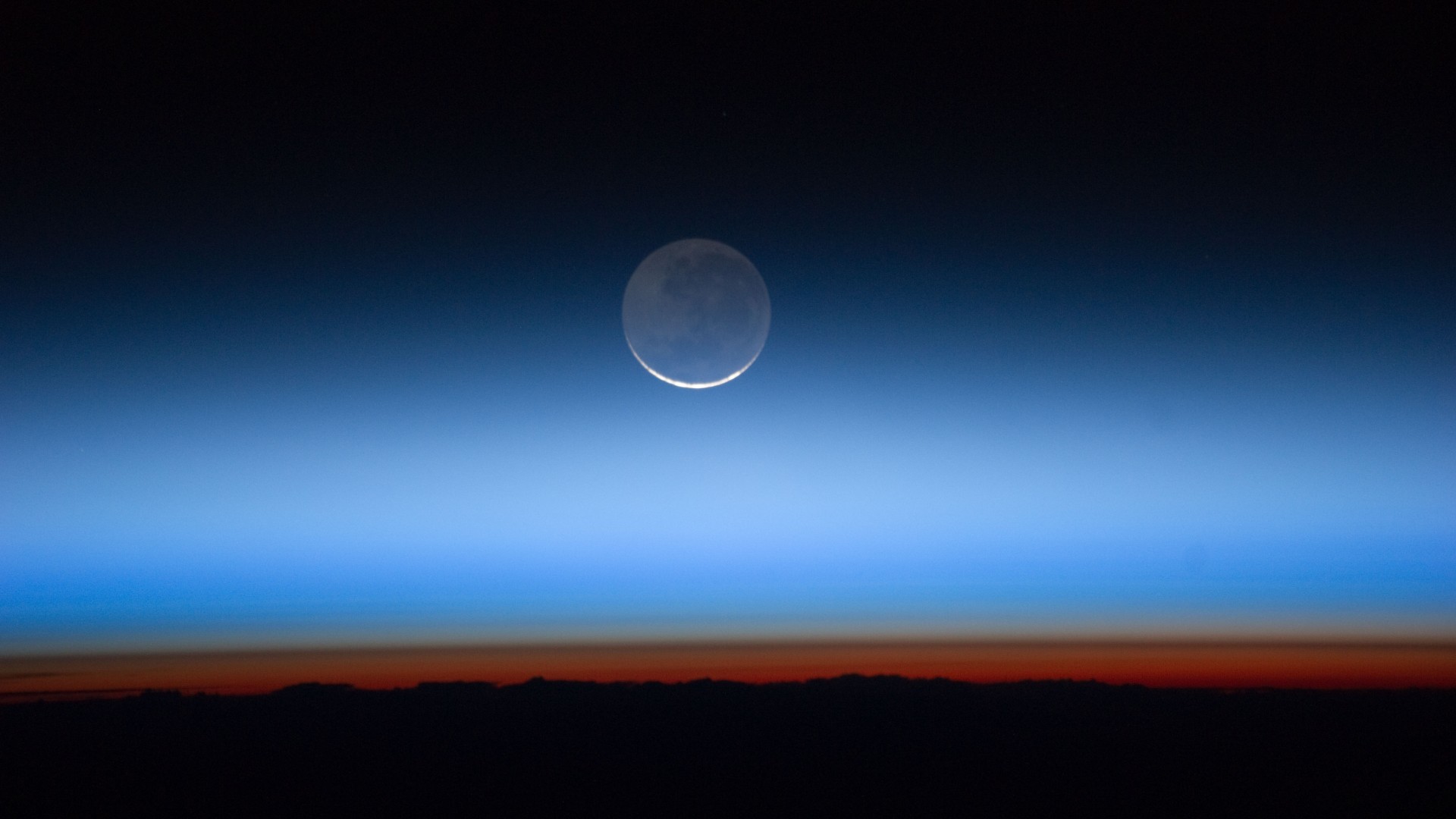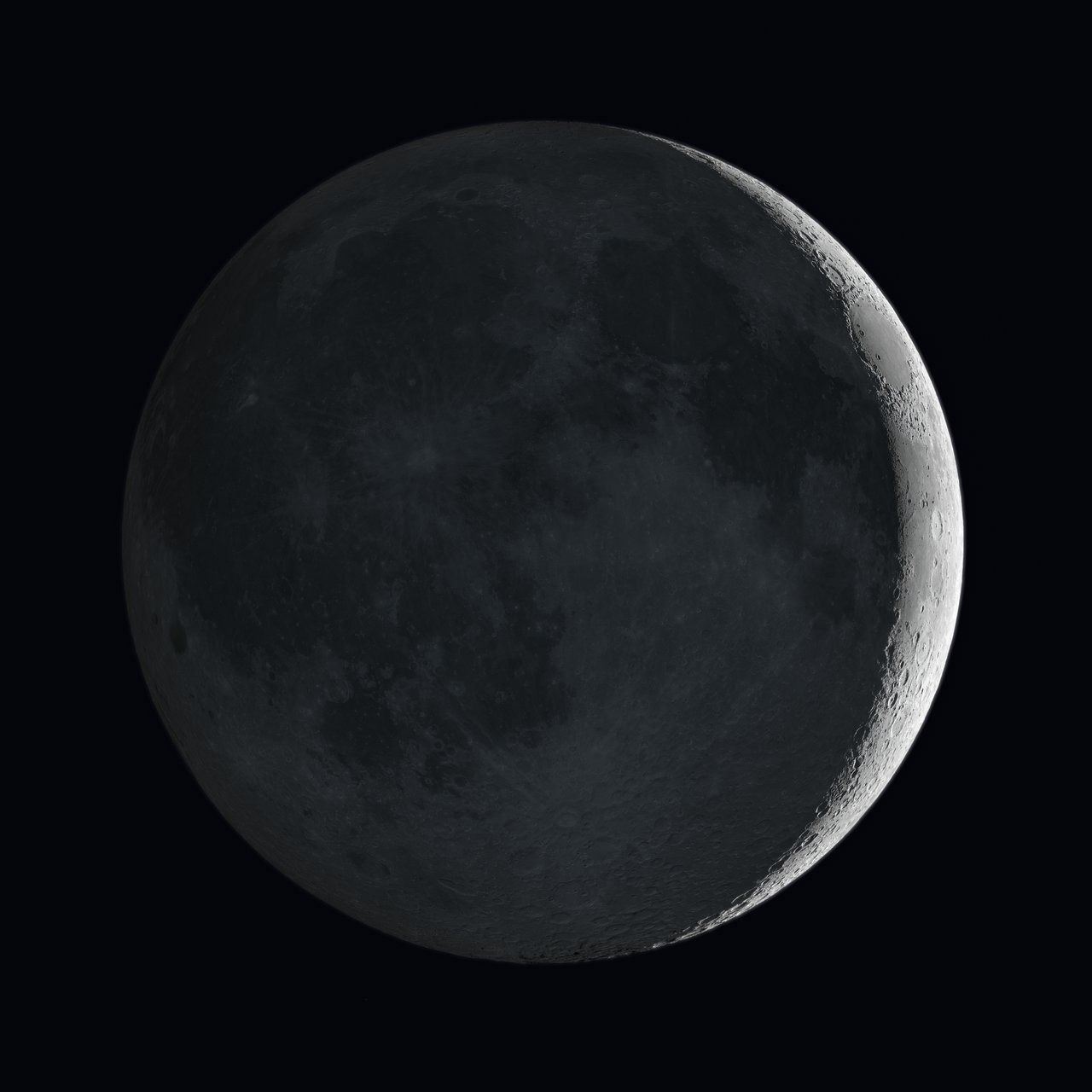How to see ghostly 'Da Vinci glow' illuminate the crescent moon this week
Twice-reflected sunlight subtly illuminates the dark limb of the crescent moon just before and after the new moon in a phenomenon called Earthshine, or 'Da Vinci glow'.

A phenomenon called 'Da Vinci glow' will be visible on the dark limbs of the moon on successive days this week and again next weekend.
The subtle light — also known as "Earthshine" — is sunlight reflected first by Earth onto the lunar surface, then again into the eyes of the viewer. The effect is a faint, ghostly glow on the shadowed part of the moon's Earth-facing side.
It's only possible to see Da Vinci glow when a slim crescent moon is visible close to the horizon during both the last few days and the first few days of the moon's orbit of Earth, which happens this week.
Da Vinci glow is named after Italian genius Leonardo da Vinci, who in the 15th century described the phenomenon as caused by sunlight being reflected by Earth's oceans to illuminate the moon's dark surface, according to NASA.
However, the primary causes of Da Vinci glow are actually clouds and sea ice, according to NASA.
'Da Vinci glow' is also sometimes called "moon glow" or "ashen glow" and, in folklore, either the "new moon in the old moon's arms" (for a waning crescent moon) or the "old moon in the new moon's arms" (for a waxing crescent moon), according to Almanac.com.

There's a new moon on Friday, May 19 — which can't be seen because the moon is roughly between Earth and the sun and is lost in the latter's glare. That also applies to the morning before and the evening after, when the old moon and new moon are generally too slim, too dim and too low in the sky to be seen without a telescope.
Sign up for the Live Science daily newsletter now
Get the world’s most fascinating discoveries delivered straight to your inbox.
In the mornings a few days before the new moon, and in the evenings for a few days after, it will be possible to see Da Vinci glow if the skies are clear.
Here's when to see Da Vinci glow on the moon in the eastern sky in the hour before sunrise this week:
- Monday, May 15: 22%-illuminated waning crescent moon
- Tuesday, May 16: 14%-illuminated waning crescent moon
- Wednesday, May 17: 7%-illuminated waning crescent moon
Here's when to see Da Vinci glow on the moon in the western sky in the hour after sunset next weekend:
- Sunday, May 21: 5%-illuminated waxing crescent moon
- Monday, May 22: 10%-illuminated waxing crescent moon
- Tuesday, May 23: 17%-illuminated waxing crescent moon close to Venus
Da Vinci glow is best seen with either the unaided eye or using any pair of stargazing binoculars or a good small telescope.
According to Timeanddate.com, the best time to see it in 2023 is in the few days before and after the new moon on April 20 and May 19. During those months the reflected light is about 10% brighter than average, according to NASA.
However, the phenomenon could be under threat. As oceans warm, the amount of low clouds over the eastern Pacific Ocean is reducing, which in turn causes a slight decline in Earth's reflectiveness and, therefore, the intensity of Da Vinci glow, according to scientists at the Big Bear Solar Observatory in California.

Jamie Carter is a freelance journalist and regular Live Science contributor based in Cardiff, U.K. He is the author of A Stargazing Program For Beginners and lectures on astronomy and the natural world. Jamie regularly writes for Space.com, TechRadar.com, Forbes Science, BBC Wildlife magazine and Scientific American, and many others. He edits WhenIsTheNextEclipse.com.










